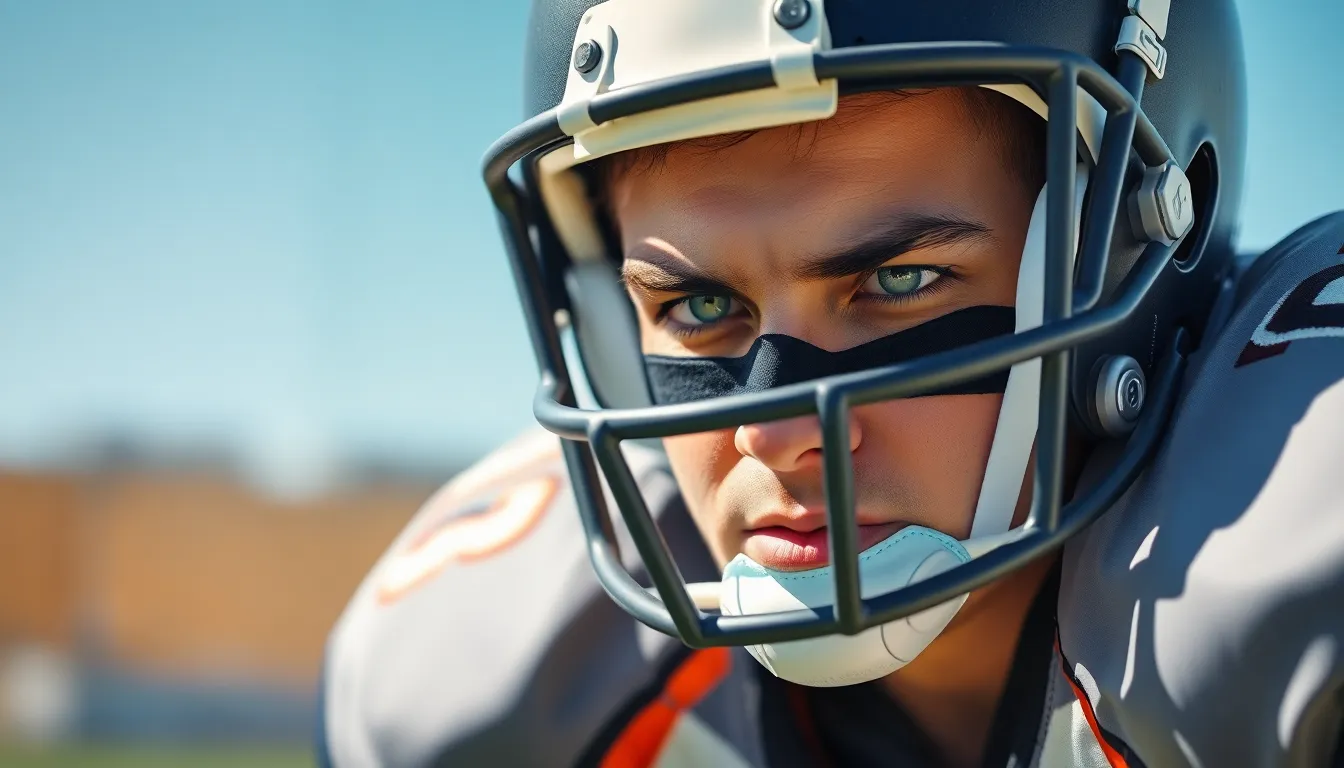Ever wondered why athletes smear that mysterious black goo under their eyes? It’s not just a fashion statement or a way to look tough—it serves a purpose. Eye black has become a staple in the world of sports, and it’s more than just a quirky tradition.
why do sports players wear eye black
Eye black has a rich history tied closely to sports. Athletes use it for practical purposes, dating back to the early days of competitive play.
Origins in Sports
Early evidence of eye black appears in Native American cultures, where warriors applied natural pigments around their eyes for intimidation. Later, players in American football and baseball adopted this practice to combat glare from the sun and stadium lights. The NFL popularized eye black in the mid-20th century, as players embraced its functionality and appearance.
Evolution Over Time
Throughout the 1970s and 1980s, eye black evolved from traditional grease to adhesive stickers featuring various designs. Applications became more focused on style, visibility, and self-expression. As athletes became more aware of branding and marketing, eye black transformed into a canvas for personal messages or team logos. Today, it remains a staple in sports culture, balancing utility and personal flair.
Purpose of Eye Black

Athletes wear eye black for multiple reasons, primarily to improve performance on the field. This practice significantly enhances both visibility and focus during competitions.
Reducing Glare from Sunlight
Eye black effectively reduces glare caused by sunlight. Many athletes compete in outdoor settings during bright daylight, making glare a substantial challenge. The dark pigments absorb light, helping players maintain sight lines on the field. Studies indicate that reducing this distraction enhances overall performance. Athletes like football players benefit immensely from this clarity, allowing for better tracking of the ball and improved reaction times during plays.
Enhancing Visibility of Players
Visibility remains crucial in sports, especially in team environments. Eye black helps distinguish players on the field, making them easier for teammates to spot. With dynamic movements and shifting positions, clear visual identification is essential. Additionally, eye black adds a level of intimidation during gameplay. Opponents may perceive players using eye black as more focused and aggressive, thus enhancing on-field presence. Ultimately, this small addition to their gear plays a pivotal role in maintaining communication and strategy among athletes.
Materials Used for Eye Black
Eye black comprises various materials, each serving specific purposes. Athletes choose these options based on personal preference, performance needs, and skin sensitivity.
Traditional vs. Modern Options
Traditional eye black consists of grease or wax-like substances. These products often contain natural pigments like carbon black, offering effective glare reduction. Modern alternatives include adhesive stickers and paints, allowing for customization. Many athletes opt for these stickers for easier application and removal. Some innovative options even feature designs or logos, enhancing team spirit. Materials like water-based face paint also exist, catering to sensitivity concerns while still providing glare protection.
Health and Safety Considerations
Health and safety play vital roles in the selection of eye black. Certain traditional products may irritate the skin, prompting athletes to explore hypoallergenic alternatives. Awareness of ingredients ensures compatibility with sensitive skin types, reducing the risk of adverse reactions. Performance-related concerns also arise; safe application should not compromise athletes’ comfort or vision. Proper removal techniques protect the skin and maintain visual clarity before competitions. Athletes prioritize safety alongside performance by choosing reliable, skin-friendly materials for eye black.
Popularity Among Athletes
Eye black remains a staple among many athletes, signifying its importance in sports culture. Its use transcends functionality, reflecting individuality and style on the field.
Iconic Athletes Who Use Eye Black
Many renowned athletes have popularized eye black through their iconic appearances. Players like Jim Thorpe and Derek Jeter embraced eye black, drawing attention to its practical benefits while showcasing unique designs. Cam Newton and Russell Wilson also adopted this practice, using bold designs to express their personality. Each athlete contributes to eye black’s legacy, demonstrating its relevance in sports today.
Cultural Impact in Sports
The cultural significance of eye black extends beyond performance enhancement. Eye black serves as a symbol of determination, resilience, and identity among athletes. It frequently appears in emerging fashion trends within sports communities, influencing younger athletes. Social media amplifies this trend, with many athletes posting images showcasing their eye black designs. This visibility enriches the narrative surrounding sports and personal branding, making eye black an essential element in modern athletic culture.
Criticism and Controversies
While eye black is widely accepted in sports, some debate its effectiveness. Critics argue that the performance benefits of eye black, specifically glare reduction, have not been conclusively proven through scientific studies. Various research indicates mixed results regarding its impact on visibility and overall athletic performance. Players and coaches may disagree on whether it truly enhances focus or simply serves as a psychological tool.
Alternatives to traditional eye black exist and are gaining popularity among athletes. Recent innovations include adhesive patches and specially designed paints that provide similar glare reduction. These alternatives often feature hypoallergenic ingredients that minimize skin irritation, catering to athletes with sensitive skin. Many athletes now opt for these alternatives for comfort and aesthetic appeal. The growing market of eye black substitutes reflects evolving personal preferences in sports.
Conclusion
Eye black has established itself as a significant element in the world of sports. Its evolution from traditional grease to modern adhesive stickers reflects both functionality and personal expression. Athletes wear eye black not only to enhance visibility but also to convey their individuality and determination on the field. While debates about its effectiveness continue, the cultural impact of eye black remains undeniable. It symbolizes resilience and identity, influencing both performance and style. As athletes continue to embrace this practice, eye black will likely remain a staple in sports culture for years to come.




